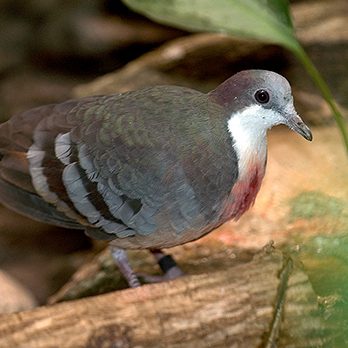Welcome to Lincoln Park Zoo’s new web app! Share your feedback

Luzon Bleeding Heart Dove
McCormick Bird House
Did You Know?
- Luzon bleeding heart doves were named for the vivid red marking on their chest, which zoo visitors often mistake for an actual wound.
- Both males and females produce crop milk to feed their young. Despite its name, crop milk is different from true milk, which is only produced by mammals. The crop is a part of the birds’ digestive tract near the throat.
- These birds do not fly very often; they even run from predators. When they do, it is only for short distances.
Don’t See the Animals?
Why aren’t animals visible at all times? To promote positive animal welfare, we provide animals with choices. They can choose to spend time in areas that are out of public view.

Take an Animal Home with You
Overview
Scientific Name: Gallicolumba luzonica
Class: Birds
Diet: Fruit (also invertebrates)
Range: Luzon, an island in the Philippines
Endangered Status: Near Threatened
More Information
Luzon bleeding heart doves are a small dove species with a white breast, gray back, and black wing bands, along with a bright red chest marking. They are most often seen alone or in pairs and prefer lowland forests with denser vegetation. They spend most of their time on the ground foraging for food.
Courting male birds may run after females with their breast pushed out to show the red marking. They build nests on bushes or low branches, and females lay one or two eggs. Both parents incubate for 17 days and share rearing responsibilities. Their young reach maturity between nine and 12 months of age.
